In early 1956, Tony Parravano, a wealthy American housing developer, commissioned Maserati to build a new large-bore V-8 for use in a Kurtis Indy chassis. The order offered Maserati the chance to develop the V-8 project, coded Tipo 54, which had been shelved since the disastrous Le Mans accident of 1955. The project also provided a natural opportunity to try the new powerplant in Maserati’s own sports-racing chassis, of which the recently developed 350S was the most obvious candidate. This car, chassis number 3501, was elongated to accommodate the new V-8 engine, whose castings had been completed by May.
After its debut in practice as the prototype 450S at the Swedish Grand Prix in August 1956, this car, now identified as 4501, displayed great potential in acceleration and top speed; although, as it was still in the experimental phases, it was not properly sorted, and it proved unable to manage the V-8’s overwhelming power. Moreover, the wrong firing order produced intolerable vibrations, further hampering the car’s performance. Nevertheless, the 450S obtained the third best time in practice; even still, it was not entered in the race, but returned to Modena instead. A purpose-built 450S chassis was subsequently engineered.
With further development conducted in view of the 1957 season, the new “production” 450S, presumably using identity 4501, had its maiden race at the 1000 KM of Buenos Aires in January 1957. The “bazooka”, as the car was baptised by Fangio, gave 10 seconds to the new Ferrari twin-cam sports cars in the first timed session, leaving the Maranello team in total discouragement. Transmission problems ultimately lead to the cars retirement, but the potential of the new mostro was clearly noted.
The production 450S took its first chequered flag at Sebring that March (with Juan Manuel Fangio and Jean Behra in chassis number 4503), followed by a 1st overall finish at the 1957 Swedish GP. In combination with the strong-performing six-cylinder cars, the 450S promised great potential as the possibility of Maserati’s first-ever World Sportscar Championship loomed ahead. Unfortunately, whilst competing against the might of Ferrari’s 315S and 335S, a rash of bad luck blunted the 450S’s impact down the stretch, and even though Fangio and his Maserati 250F were awarded the World Formula One title, the 1957 Sportscar Championship went to rival Ferrari by a mere five points.
Following the 1957 season, the FIA imposed a three-litre formula that made the 450S ineligible, although some examples proved quite successful in American SCCA racing. Just 11 highly scrutinised cars (including this prototype) were constructed over an 18-month period.
Chassis Number 3501/4501/350SI-10
The repetition or substitution of identical chassis numbers by Italian automakers of the 1950s and 1960s is by no means rare, but the unusual circumstances surrounding Maserati’s use of chassis number 4501, no less than three times from 1956 to 1958, has been the source of much debate amongst marque experts in recent years. However, this car’s history has most recently been verified by a bevy of original documentation and clarified by several notable Maserati historians.
This car, originally built as a six-cylinder 350S and assigned chassis number 3501, was hastily prepared for the 1956 Mille Miglia, held from the 28th to the 29th of April. During the famed 1,000-mile race, the car was driven by the legendary Stirling Moss, with Denis Jenkinson navigating. Just outside of Rome, 3501’s brakes gave out and the Maserati careened through a roadside retainer, barely coming to a rest on a tree overlooking a precipitous ravine. Moss and Jenkinson walked away unharmed (other than a scratch on Moss’ wristwatch), but the car wasn’t quite so lucky, and it was returned for the factory for repairs and further development.
1956 Maserati 450S Prototype – Profile Continued
With the engineering spurred by Tony Parravano’s order, 3501 became a test-bed prototype for the 450S program, and the wheelbase was duly extended to accommodate the new V-8 powerplant. A new body was fitted to the car by Fantuzzi, which featured a bulbous new bonnet and monoposto coachwork. In this fantastic form, with short-tipped “stub” exhaust pipes, the car was next seen (and heard!) during testing at the Swedish Grand Prix in August 1956. Following the Swedish GP, the 450S model was deemed to require further testing and its own purpose-built chassis. The factory undertook construction of several such cars, beginning with chassis number 4502, whilst keeping the number 4501 for future Works use.
Chassis number 4501 was the source of some future confusion, as it was subsequently assigned to the 450S run by Moss and Juan Manuel Fangio at the 1957 Buenos Aires 1000 KM, which was a car that Jean Behra later crashed during practice at the 1957 Mille Miglia. Following Behra’s accident, the same number was “provisionally used” yet again (as original Maserati documentation phrases it) for the Costin-designed Zagato-built Le Mans Coupé of 1957. This car was raced as chassis number 4501 (though initially built as 4506) before being re-commissioned as a road car a year later and re-identified as chassis number 4512. It is also understood that chassis number 3501, this car’s original identity, was transferred to another 350S, the car that was raced in the 1957 1000 KM of Buenos Aires, driven by Piotti and Bonomi
With the evolution of the Type 54 chassis, this prototype’s days as a test mule drew to a close, and the modified 3501/4501 chassis was stored away by Maserati. Noted marque historian Walter Bäumer remembers his inspection of the car several years ago: “Clearly the frame is original and genuine. I could find cuts in some of the elongate tubes, clearly indicating Maserati ‘tried to do something’ with it to make bigger engines fit into this chassis that had originally been made for the inline six-cylinder engine”.

After collecting dust at the factory, this rare 450S prototype was eventually sold without an engine to Tom Meade on 15 August 1965. The car is described therein on its official Certificato d’Origine as chassis number 350SI-10, a curious designation. As explained by former Maserati Managing Director Aurelio Bertocchi, the son of long-time factory chief mechanic and test driver Guerrino Bertocchi, renumbered cars were often described internally by merely switching the sequence of chassis digits; thus, the “10” suffix of 350SI-10 actually referred to the “01” of 3501.
Tom Meade sold the prototype 450S to Niles F. Moss on 29 October 1965. Moss delivered the car to the Modenese shops of Leoni, Drogo, and Gentilini, who embarked on making it more roadworthy over the course of late 1965. Most significantly, this work consisted of the installation of a Corvette V-8 engine, a Ferrari Tipo 510 five-speed transaxle, and a Ferrari 250 GT Cabriolet windshield. Following this effort, 350SI-10 was imported to the United States.
Once stateside, this car was sold by Mr. Moss to Gerald Satterfield, of Nevada City, California, on 26 May 1970. After being registered as 285 BME, Mr. Satterfield used the handsome 450S as a regular road car, which surely attracted no lack of attention around the Golden State. This 450S Prototype was then discovered in July 1981 by the consignor, a discerning Italian collector who soon acquired and re-imported it to its native Italy.
The consignor then set about a lengthy restoration and documentation process that inevitably called into question the car’s precise history. Consulting with the Maserati factory and several other owners and marque experts (including more recent correspondence with of Maserati), the consignor confirmed that his car was the 1956 Mille Miglia entrant, as well as the 450S prototype that appeared at the 1956 Swedish GP. Maserati’s then-managing director, Aurelio Bertocchi, confirmed that the car was indeed considered by the factory to be the first chassis designated “4501”, with the history described above.
Prior to restoration, the question still remained whether the car should be returned to 350S specifications, as in the 1956 Mille Miglia, or in the extended-wheelbase 450S configuration that debuted at Sweden in 1956 During numerous consultations with the factory, including with one of the firm’s senior chassis men who reportedly worked on the car in period, Aurelio Bertocchi suggested that 3501/4501 ought to be restored as the mighty 450S prototype, which was the final form in which the car was used by the factory.
Considerations for full restoration were entrusted to Officine Orsi srl, managed by Roberto Orsi in Modena. Several ex-Maserati factory employees, including Bietolini, Lodi, Majorana, and Golinelli, weighed in on the process to ensure as authentic a restoration as possible. As the car never possessed any physical chassis number stamps in the first place, the consignor chose to preserve the original character with a stampless chassis presentation rather than create a historically artificial watermark. It must be noted that Works race cars of this period were often not stamped at all, in the interest of having the car ready by race time with the use of alternative identities related to available custom transit carnets.
In keeping with the 450S specifications, an original-period Maserati V-8, engine number 4519, was sourced to power the car. The 5.7-litre marine engine was acquired from Count Agusta, coming from one of his all-conquering KD Formula racing hydroplanes. Although technically a Tipo 59 (5.7-litre) unit, the engine was discovered to have been bored to 110 millimetres, converting it to the even more powerful (580 brake horsepower) Tipo 62 unit of 6,458 cubic centimetres. Whilst the larger displacement boosted the car’s overall power and torque, the marine engine’s forgiving cam profile makes the car surprisingly tractable, allowing for ease of road use in historic rally events.
After the completion of its restoration in 1987, this car was only rarely driven by the consignor over the ensuing 27 years, including at the 1987 Mille Miglia, as well as at the official celebration for the 90th Maserati anniversary in 2004. In the interim, the car has been carefully maintained in a climate-controlled environment. More recently, the car was displayed at the Museo Casa Enzo Ferrari in Modena as part of a 2012 exhibit titled Le Grandi Sfide, Ferrari – Maserati, which focused on the historic duels between the two famed teams.

In recent years, after recurring problems with the original transaxle (the Achilles’ heel of the Tipo 54), the consignor undertook the enterprise of redesigning and remanufacturing a new transaxle from state-of-the-art technology and materials. The result is an entirely new unit that is indistinguishable from the original and offers superior and much safer performance. An original Colotti unit is included with the car, although it would need re-commissioning prior to use.
Although fairly tractable for road use, this 450S is of impeccable breeding and deserves to be unleashed on a closed circuit or wide open roads, where it’s potential can be fully exploited. This car was conceived for Works champions by the likes of Fangio, Moss, and Behra. Maserati historian Denis Jenkinson, navigator at the 1956 Mille Miglia with Stirling Moss, timed Jean Behra in practice as he tested a 450S, measuring his speed at an outrageous 181 mph! As noted by the owner, “You need to be brave. Like a jet taking off, the car pins your shoulders against the seat in any gear and builds up speed with unbridled determination”.
Claiming only three private owners since it left the factory in 1965, this thunderous Maserati sports racer boasts impeccable provenance, important racing history as the Works entry for the 1956 Mille Miglia, developmental history, and the inestimable cachet of being the prototype of the legendary 450S. This important Maserati is available for purchase for the first time in 33 years, and it offers a crowing acquisition for the serious Maserati collector, particularly in light of “The Trident’s” current centennial celebration.
This 1956 Maserati 450S Prototype by Fantuzzi, the works entry at the 1956 Mille Miglia as driven by Stirling Moss with Denis Jenkinson, is offered for sale at the upcoming RM Auctions Monaco sale, scheduled for March 10, 2014 in Monaco. It is expected to sell for €4,000,000 to €5,500,000.

[Source: RM Auctions; Photo Credit: Cymon Taylor ©2014 Courtesy of RM Auctions]


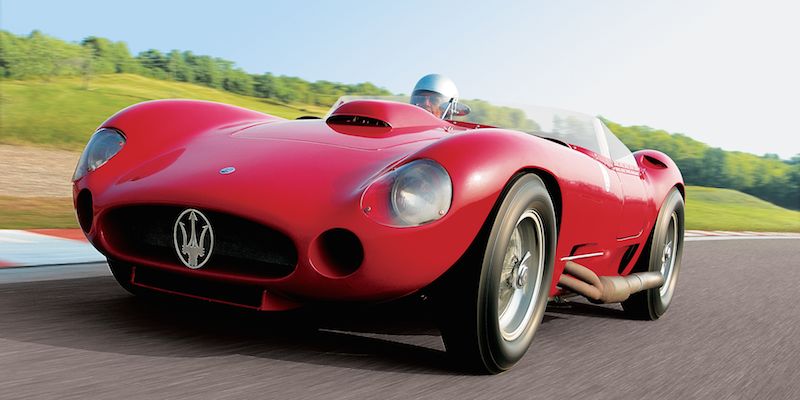
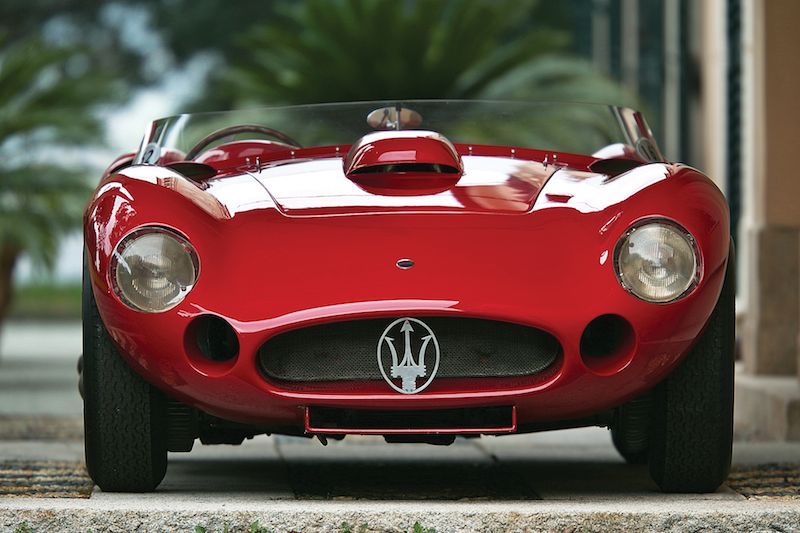
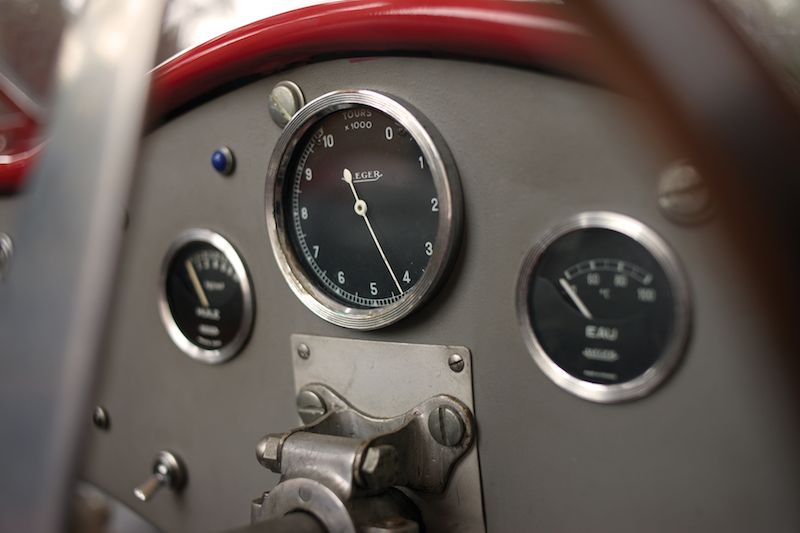
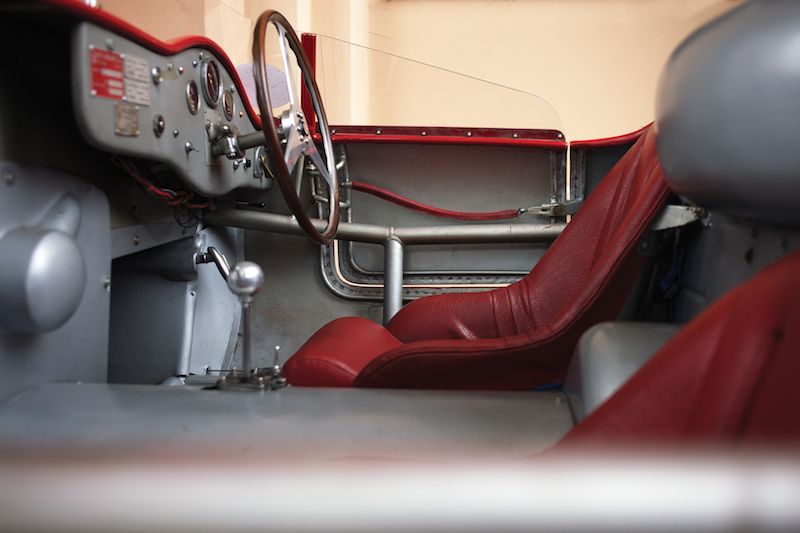
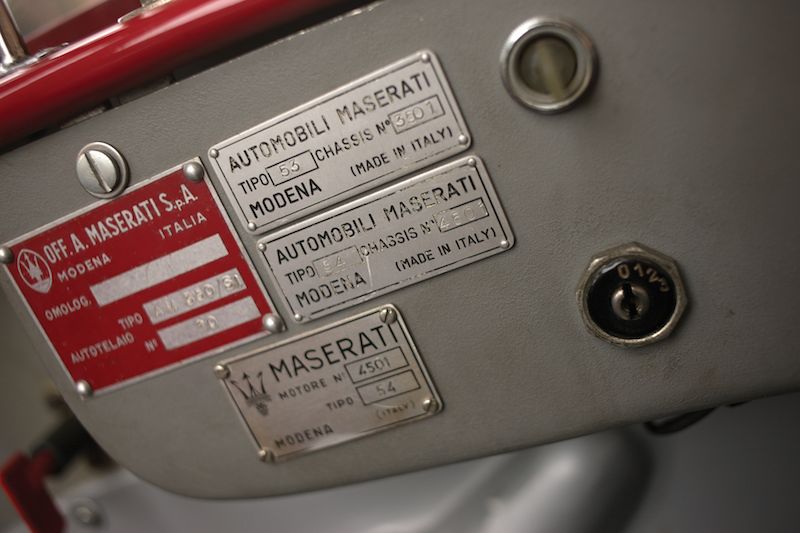
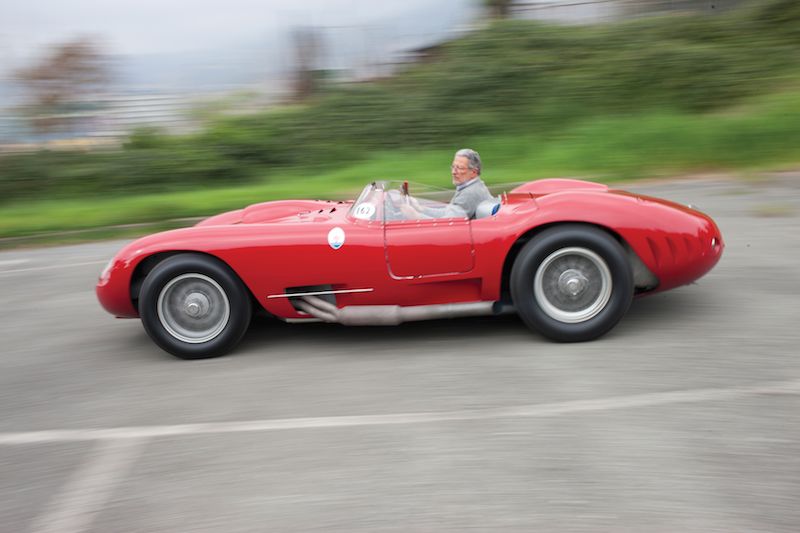
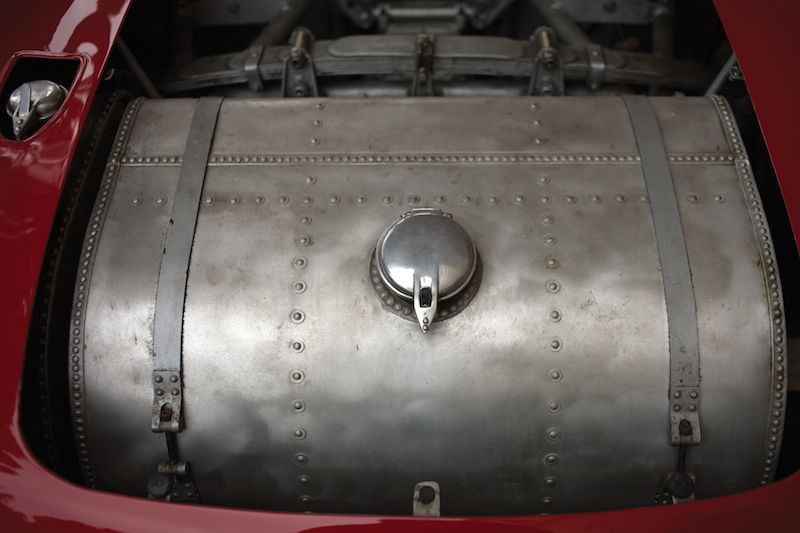
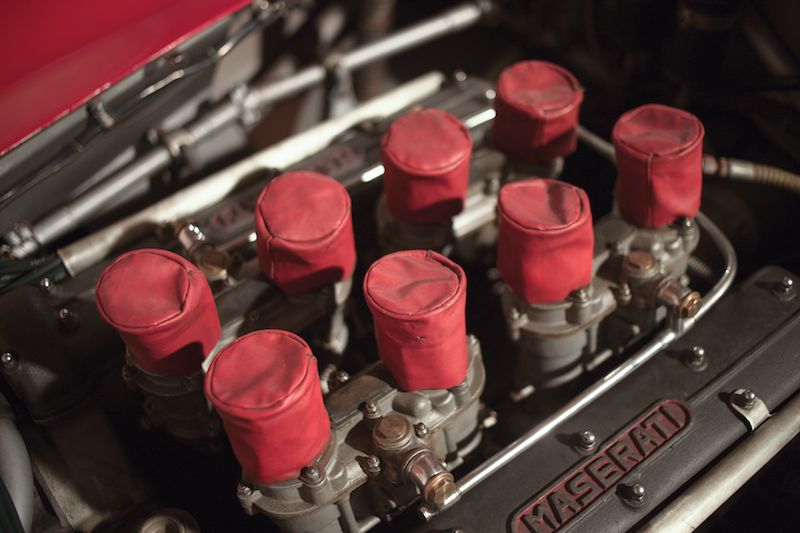
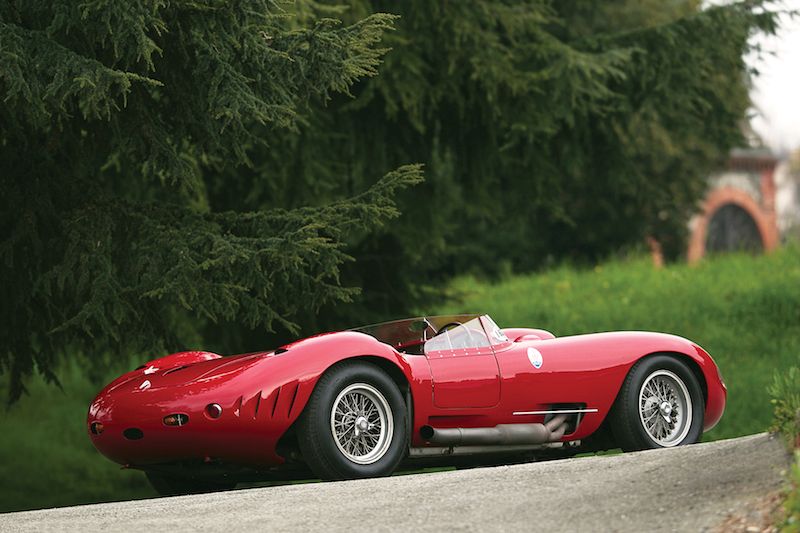

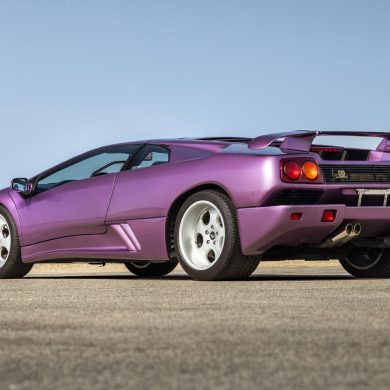
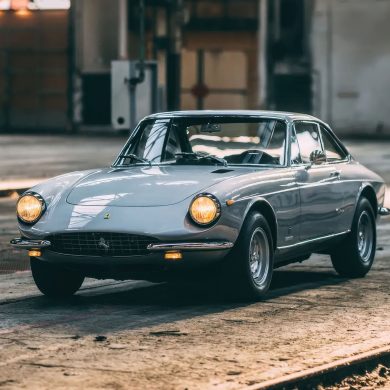
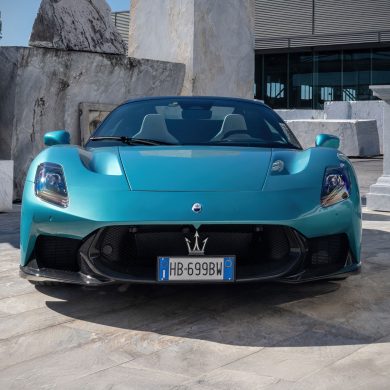
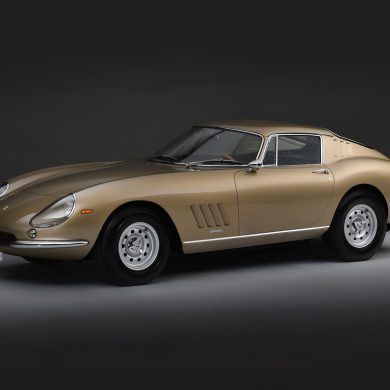
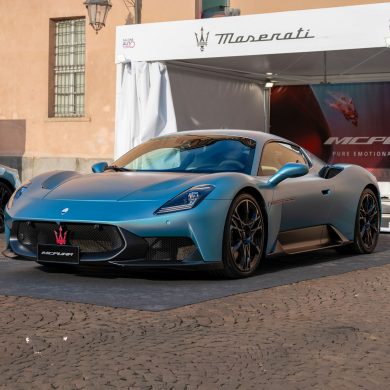


Great car…
Where are the other 10 build? And who owns this one’
Terrific, I one of these 450 Le Mans motors was placed into a Henry Lauterbach 19′ Hydroplane owned by fellow Palm Beach racer Don Wilson with Briggs S, Cunningham around 1963 . Spoke with Briggs at the Miami Orange Bowl Regatta then I won the 48 hydroplane class in my copy Lauterbach Hydroplane. Lauterbach was the Ferrari of hydroplane racing 1952-1974. T.I.D.E. Ferrari racing, Palm Beach, tom I. davis, Jr. Please help save the MIAMI Marine Stadium and old Palm Beach, again !!!
Shortly after car was delivered, Tony had it taken out to Willow Springs for testing, His driver Jack McAfee had
won 2 important events for Parravanoi in 1954 and knew big powerful cars. Years over lunch Jack told me he
was not im,pressed with the car, but his feelings could have been colored by racing a 550 Porsche st the time.
This important Maser sat for long time,,NOT raced by Tony then auctioned off by IRS for taxes owed to Govt
and finally in February of 1959, Young driver Billy Krause showed its performancew at the Pomona Fairgrounds
in Southern California, always up front and fast
Jim Sitz